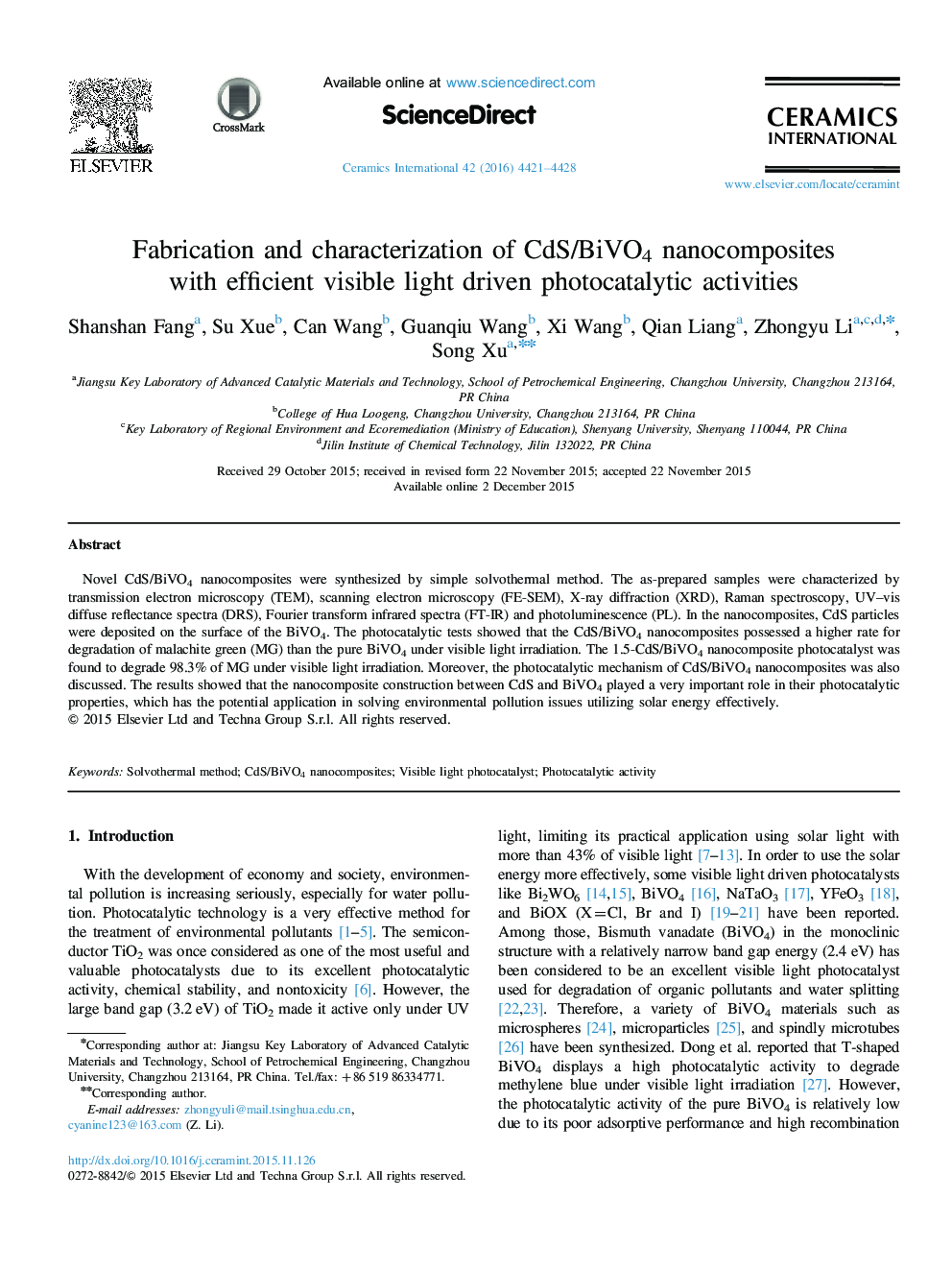| Article ID | Journal | Published Year | Pages | File Type |
|---|---|---|---|---|
| 1459183 | Ceramics International | 2016 | 8 Pages |
Novel CdS/BiVO4 nanocomposites were synthesized by simple solvothermal method. The as-prepared samples were characterized by transmission electron microscopy (TEM), scanning electron microscopy (FE-SEM), X-ray diffraction (XRD), Raman spectroscopy, UV–vis diffuse reflectance spectra (DRS), Fourier transform infrared spectra (FT-IR) and photoluminescence (PL). In the nanocomposites, CdS particles were deposited on the surface of the BiVO4. The photocatalytic tests showed that the CdS/BiVO4 nanocomposites possessed a higher rate for degradation of malachite green (MG) than the pure BiVO4 under visible light irradiation. The 1.5-CdS/BiVO4 nanocomposite photocatalyst was found to degrade 98.3% of MG under visible light irradiation. Moreover, the photocatalytic mechanism of CdS/BiVO4 nanocomposites was also discussed. The results showed that the nanocomposite construction between CdS and BiVO4 played a very important role in their photocatalytic properties, which has the potential application in solving environmental pollution issues utilizing solar energy effectively.
